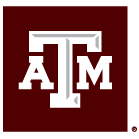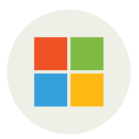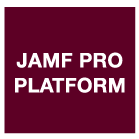 Unifying IT
Unifying IT
Unifying IT Leads to More Return on Investment
To continue unifying IT in 2023, Technology Services focused on gaining feedback from the larger Texas A&M University community with the recently launched IT governance framework supporting the unified vision. This universitywide model gathers information from all areas of the university through committees. These structured committees are nominated to participate and encourage collaboration across Texas A&M for the stewardship of technology services.
Unification of services provides many benefits including reduced costs by purchasing at scale and reduced labor when work duplication is removed. Technology Services continued unifying duplicate services throughout the year.
To consolidate the backup support and replace aging systems, Technology Services selected a new vendor, and the enterprise backup team now works with Aggie Cloud customers across the university. Aggie Cloud and the cloud offerings provided by Technology Services have also seen growth over the last year with Technology Services numbers indicating that Aggie Cloud, AWS and Azure have experienced significant growth of about 30% in the accounts used and billing value over the past year.
Also, this year, Technology Services implemented endpoint management for Apple devices across all campuses. This will improve consistency, efficiency and security, and the next step is to begin the Windows endpoint management project in spring 2024.
Several projects this year have involved telecommunications, including a multi-year project to unify the Voice Over Internet Protocol (VoIP) phone service systems in 2023. The project entails migrating and upgrading employees from three separate services to one single platform, leading to substantial cost savings and a positive return on investment.
Technology Services also completed a campuswide mobile device audit in early 2023. A list of hotspots, phones and tablets with cellular and WiFi access that needed to be formally tracked by individual units were identified. Over the summer and fall of 2023, the division worked on a cellular device management process to ensure the security of mobile devices and compliance with Texas A&M’s standards and the governor’s directive.
The division is also excited to streamline and unify the processes surrounding technology procurement with the TechHub project, which was initiated this year and will offer a convenient way for departments to purchase high-quality computer hardware. In parallel, Technology Services is streamlining the processes and access to IT services and support through a new universitywide help desk and ticketing system. Powered by TeamDynamix, this new platform is set to launch in 2024 and will offer information about IT services, serve as a knowledge base repository and provide direct access to requesting available services or reporting problems.
New IT Governance Helps Texas A&M Align Technology with Mission
Effective management of technology is crucial for the success of any university. IT governance is a process that makes recommendations regarding technology-related activities by gathering the input of various stakeholders, including faculty, staff and students, who use or provide technology services.
Previously, the IT governance committee included representation from the various distributed IT teams across campus and made up 75% of the overall membership. Now, with the new IT governance framework in place, the committee appointments with members in Technology Services make up only 25% of the overall membership.
Texas A&M University adopted a universitywide IT governance framework that supports the unified vision for IT, directly aligning with its goals and involving those responsible for IT services. The model gathers information from all areas of the university through structured committees nominated to participate.
The benefits of universitywide IT governance include:
- Provides accountability for technology-related activities, including management of risk, financial impact and customer experience.
- Encourages collaboration across Texas A&M for the stewardship of technology services.
- Enables greater transparency, agility and business outcomes, with the input of the governance committees.
Learn more about each of the committees and committee members that support the IT governance model.
Centralized Backup Service Creates Efficiencies
In late spring 2023, the IT teams supporting the School of Architecture and College of Engineering initiated collaborative discussions with the infrastructure operations team to address the imminent replacement of the existing backup service and its aging hardware. Following an extensive market evaluation, comprehensive feature analysis and rigorous functional testing of various products, Rubrik emerged as the chosen enterprise backup service. Its mandate extended to supplying backups for the revamped Aggie Cloud environment.
By late July, the cluster became operational, facilitating the smooth migration of existing customers from the retiring system. Concurrently, ongoing customer-led migrations to the Aggie Cloud environment also seamlessly transitioned. As migrations concluded, the backup team was tasked with onboarding several new groups facing the imminent expiration of their backup solutions in late September. This surge, coupled with the influx of new tenant virtual machines into Aggie Cloud, resulted in a substantial increase in capacity utilization—nearly quadrupling within a mere two months.
To effectively address this unprecedented growth, an expansion plan for the cluster was swiftly executed, leveraging the strategic purchase plan established with our technology partners during the project's solution exploration phase. A remarkable turnaround time, from quote request to order fulfillment, enabled the division to double the capacity by mid-November with future plans for this to occur again on the horizon.
The enterprise backup team now caters to an extensive range of stakeholders, including all Aggie Cloud customers, the College of Arts and Sciences, The Bush School of Government and Public Services, the College of Veterinary Medicine and Biomedical Sciences, Enterprise Information Systems, the College of Engineering, the School of Law, Open Access Labs, Enterprise Application Services, Division of Student Affairs and Transportation Services.
Consolidating backup services has yielded cost savings by reducing infrastructure, storage and operational overhead. Automation has boosted efficiency, while cloud integration offers scalable, cost-effective storage. Faster recovery times minimize downtime, enhancing business continuity and simplified management lowers training costs while security features aid compliance and help the university avoid potential fines. Overall, the new tool streamlines backup processes, optimizes resources and delivers a compelling return on investment for Texas A&M.
Improving Endpoint Management

At Texas A&M University, there are almost 7,500 Apple devices and 45,000 Windows workstations across all campuses. Before centralization, these devices were managed by different groups. To improve endpoint management’s consistency, efficiency and security, Technology Services is working towards centralizing endpoint management for all Texas A&M-issued devices.

7,500

45,000

One of the major initial steps was to implement a unified Apple Device Management platform, Jamf Pro, starting in spring 2023 following a phased approach to create minimal customer interruptions. This portion of the project successfully concluded in fall 2023 and unified 17 existing Jamf instances, representing 5,200 managed devices and approximately 2,500 unmanaged Apple devices across Texas A&M.

17
5,200
2,500
Technology Services is now able to reduce technology costs and redundant administrative overhead while improving customer experience for those with Apple devices. This is done through a more cohesive approach to manage the security of each device and increased reliability as the software deployment and updating processes run continuously in the background. Device owners can also choose when to install new software or run routine updates on their devices through self-service tools.
Beyond implementing the new platform, Technology Services also invested in the IT professionals through formal Jamf training equipping them with specialized knowledge and skills related to the endpoint management system. Approval was received to host Jamf training on campus several times during the initial project and resulted in dozens of IT pros achieving certification.
The next step is to begin the Windows endpoint management project in spring 2024 building on the successes and lessons learned from the Apple device management unification project.
Software Development Team Centralized
The centralization of our software development teams at Texas A&M University has brought about significant enhancements in collaboration and efficiency. By working across traditional siloed teams, we have cultivated a more interconnected and skilled community of developers. This transformation proved crucial in tackling complex projects. For instance, in the technology framework upgrade for the ItNet site, we pooled together the expertise of previously three separate teams, which led to marked improvements in security and performance. Similarly, in the ongoing My Parking Account rewrite project for Transportation Services, centralization allowed for a swift and effective response to a critical security issue in the software design, showcasing our enhanced problem-solving capabilities.
Furthermore, the centralization has been instrumental in addressing the Division of Student Affairs' backlog. By streamlining focus and strategy, our team expedited the completion of major software projects like the Get Involved Event Planning and the Get Involved Recognised Student Organizations (RSO) Recognition - Phase I, alongside six PHP upgrade and application rewrite projects. The integration with the enterprise infrastructure management team further optimized the support for the Get Involved flagship application, and the addition of resources to the WordPress WP engine migration project enabled our developers to concentrate more on improving the Division of Student Affairs' software applications.
Overall, this collaborative environment has not only accelerated the development process but also significantly elevated the quality and security of our software solutions, aligning with our strategic goals of innovation and excellence in technology.
Aggie Cloud Numbers
- Aggie Cloud VMs increased by 21.7% and the monthly rate card value increased by 148%.
- AWS Accounts increased by 41% and the billing value increased by 43.6%.
- Azure Accounts increased by 7.8% and the billing value increased by 50.5%.
- GCP Accounts remained the same at 0% and the billing value increased by 1.7%.
- Cumulative CSP (AWS/Azure/GCP) Accounts increased by 28.5% and the billing value increased by 34.6%.
Here are some additional insights based on the comparative data:
- Aggie Cloud’s cumulative rate card value for 2023 is $1,548,846. However, the cumulative rate card value for 2022 is not available due to a gap in billing during the AC1->AC2 migration.
- AWS had 132 accounts billed at $38,286.03 in December 2022. In November 2023, the number of accounts increased to 186 and the billing value increased to $91,501.95. The cumulative billing value for AWS in 2022 was $444,379.41, while in 2023 it was $638,096.82.
- Azure had 64 subscriptions billed at $41,435.13 in December 2022. In November 2023, the number of subscriptions increased to 69 and the billing value increased to $47,079.90. The cumulative billing value for Azure in 2022 was $298,200.37, while in 2023 it was $448,889.72.
- GCP had 11 projects billed at $19,295.46 in December 2022. In November 2023, the number of projects remained the same at 11 and the billing value increased to $26,870.58. The cumulative billing value for GCP in 2022 was $264,523.10, while in 2023 it was $268,929.95.
- The cumulative number of public CSP accounts increased from 207 in 2022 to 266 in 2023. The cumulative public CSP spend increased from $1,007,102.88 in 2022 to $1,355,916.49 in 2023.
These numbers indicate that Aggie Cloud, AWS, and Azure have experienced significant growth in both accounts and billing value over the past year. GCP has remained stable in terms of accounts but has seen a slight increase in billing value. The cumulative CSP (AWS/Azure/GCP) accounts and billing value have also increased. The comparative data shows that all three CSPs have experienced growth in billing value over the past year.
Please note that these numbers are based on the data provided and may not be indicative of future performance.
Streamlining Phone Services to Single VoIP Platform
A multi-year project to unify the Voice Over Internet Protocol (VoIP) phone service systems at Texas A&M University began in 2023. To date, the phone system unification project is progressing not only ahead of schedule, but also under budget, even as a significant number of office moves for employees were announced.
The project entails migrating and upgrading employees from three platforms to one single platform, leading to substantial cost savings and a positive return on investment. Technology Services has addressed 2,860 lines so far. Almost 60%, or approximately 1,638 lines have been updated to the new platform. The projected savings of this project would reduce the original cost from $1.5 million to about $700,000.
The project also demonstrates the benefits of centralization and budget stewardship by using refurbished phones and existing resources. Additional annual savings of $225,092 have come from disconnected lines. It is anticipated additional cost savings will be realized through the disconnection of more lines as the project progresses in 2024.
Learn more about the VoIP upgrade project.
Device Audit Leads to Cost Savings
In early 2023, Technology Services completed a campuswide mobile device audit and discovered a list of hotspots, phones and tablets with cellular and WiFi access that were not formally tracked by individual units. The initial goal was to ensure security requirements were being met with the mobile devices and to eliminate waste for the devices no longer in use, but still being billed for as an active device. During the audit, the division collaborated with the Division of Finance and Business Services to develop a cohesive plan from both the technical and financial perspectives.
As a result of this collaboration, approximately 350 mobile devices were identified for disconnection. Telecommunication operations services support worked quickly to disconnect the appropriate devices, an action that resulted in a cost savings of approximately $150,000 annually for the university.
Over the summer and fall of 2023 Technology Services worked on a cellular device management process to ensure the security of mobile devices and compliance with Texas A&M's standards and the governor’s directive. 98.05% of Texas A&M-owned cellular devices are now enrolled in management software.
Streamlining IT Support Services
With multiple, non-integrated service management tools in use across Texas A&M, Technology Services recognized an opportunity to streamline access to IT services and support through a new universitywide help desk and ticketing system. Powered by TeamDynamix, this new platform is positioned to offer information about IT services, serve as a knowledge base repository and provide direct access to request available services or report problems.
Phases one and two were completed in summer 2023 and included discovery, planning efforts and in-depth consultation with university community members to identify key focus areas to support phases three and four, the new design and testing of the interface. Taking into account feedback received from focus group conversations, Technology Services began mapping out internal processes and associating differences based on request type, location and other criteria to develop the backend of the new platform.
Much of this preliminary work included identifying areas of redundancy or overlap and outlining which services are in scope for the initial project. In parallel, an operational committee has been established as well as an advisory committee to engage the university community in the implementation and ongoing support of the new platform. Now in full implementation, the operational committee and IT professionals are working with each academic and operational unit to socialize the new interface and help those reviewing, routing and supporting requests with finalizing the appropriate dependencies to further streamline efforts to resolve inquiries.
Learn more about the TeamDynamix project.
TechHub Streamlines Procurement of IT Equipment

TechHub aims to streamline the technology procurement process at Texas A&M University. Initiated in 2023, this program will offer a convenient way for departments to purchase high-quality computer hardware that meets their needs, reduce costs and improve delivery times. TechHub follows five guiding principles: reducing direct costs, supporting shared decision-making, identifying and evaluating emerging technologies, streamlining processes and workflows, and prioritizing value and user experience.
The division began onboarding colleges/schools and administrative units in January 2024. Although the online store just began onboarding units, the TechHub team has already saved colleges and units more than $841,000 by purchasing at scale and renegotiating pricing with hardware vendors.
Learn more about the TechHub program.